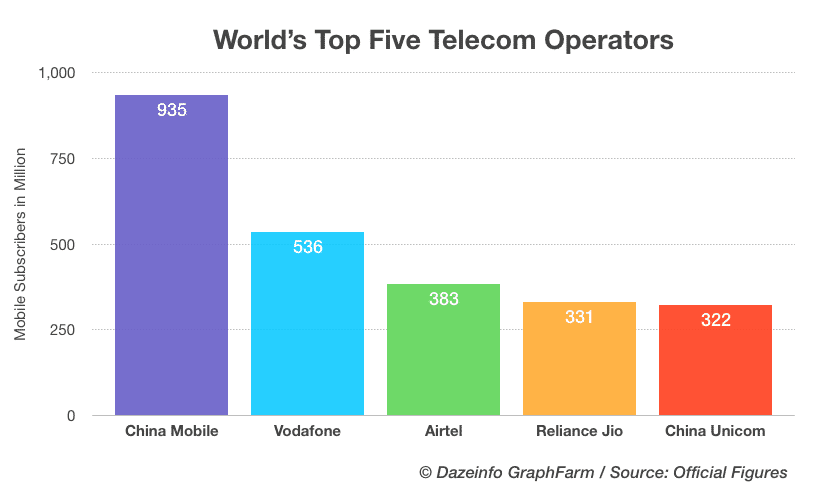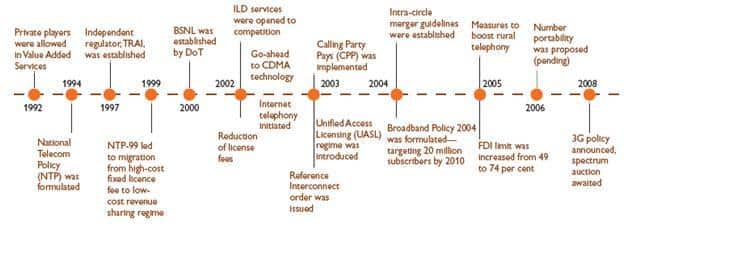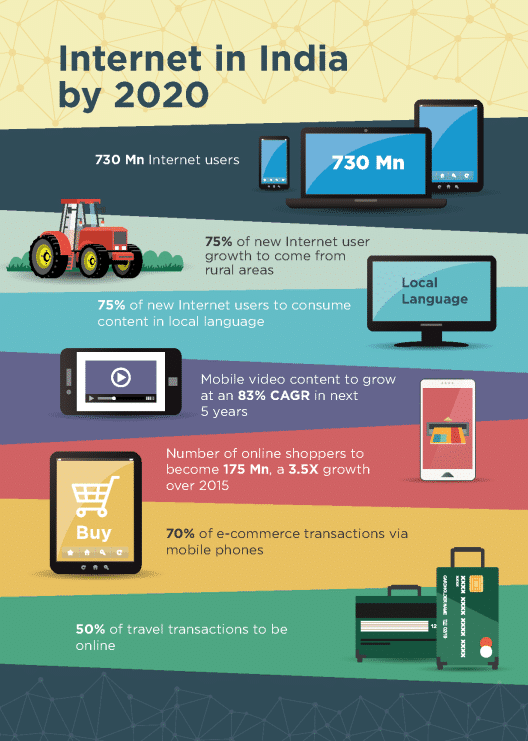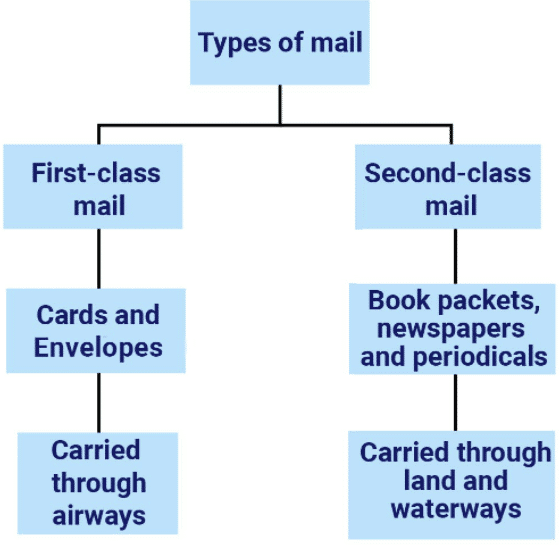- The development of communication technology, technology that enables communication, has evolved over time. This evolution has had a significant historical impact; from the invention of the telegraph, which played a crucial role in the French Revolution, to the firefighters who came in on their days off after seeing the World Trade Center towers attacked on television in 2001.
- The expansion and development of industries in the modern world would not have been possible without the development of communication technology.
- The rapid development of communication technology has been aptly termed as a ‘revolution’. Communication and information technology comprises various modes such as the postal network and telecommunications.
- The communications system includes posts and telegraph, telecommunication system, broadcasting, television, and information services. The communication system serves to link various segments of the market and supplies the information and data needed by participants in the economic development process.
Postal System:
- It may be recalled that the postal system of India was solely used for official purposes till 1837 when the postal services were opened to the public. The first postage stamp was issued in Karachi in 1852, valid only in the Sind province.
- The Indian Post Office was reorganized as an institution in 1854 when 700 post offices were already in existence. The statute governing the postal services in the country is the Indian Post Office Act, 1898. It vests the Government with the exclusive privilege of collecting, carrying, and delivering letters within the country. However, now private courier services have been allowed.
- At the time of independence there were 23,344 post offices; of these 19,184 post offices were in the rural areas and 4,160 post offices were in the urban areas. Today, the country has more than 1,55,000 post offices, of which over 1,39,200 are in rural areas and over 16,500 in urban areas. As a result of this seven-fold growth in the postal network,
- India has the largest postal network in the world. On average, a post office serves an area of 21.09 sq. km and a population of 6,602. Post offices in rural areas are opened subject to satisfaction of norms regarding population, income, and distance laid down by the department for the purpose.
- The element of subsidy involved in opening post offices in the hilly, desert, and inaccessible areas is to the extent of 85 percent of the cost, whereas the subsidy in opening a post office in normal rural areas is to the extent of 61 percent of the cost.
- The postal network consists of four categories of post offices, viz., head post offices, sub-post offices, extra-departmental sub-post offices, and extra-departmental branch post offices. All categories of post offices offer similar postal services, with the delivery function being restricted to only earmarked offices. In terms of management control, accounts are consolidated progressively from the branch post office to the sub-post office and finally in the head post office.
- The postal network in India (constituting the largest in the world) continues to fulfill its universal service obligations of making basic services available to all. But postal services continue to run into deficit. This is mainly because the emphasis is on the social objective.
- The long-term objective of the Department of Postal Services is to locate a post office within three kilometers of every village and to provide a facility of a letter-box in every village with a population of over 500. There has been an expansion of the postal network on a gigantic scale from about 22,000 post offices at the time of independence to over 1.5 lakh post offices in 2004.
Grameen Sanchar Sewak (GSS) Scheme
- It is a pilot scheme launched on December 24, 2002, through Grameen Dak Sewak Delivery Agents (GDSDA) of the Department of Posts (DOP), attached to the rural post offices, who are willing to work as a franchisee for Bharat Sanchar Nigam Limited (BSNL) on the existing STD/ ISD/PCO franchisee basis.
- In this scheme, GDSDA volunteers are called Grameen Sanchar Sewaks (GSS), who carries a mobile fixed wireless terminal (FWT) with the display unit in a carry bag and visit door to door to provide telephone facility to the rural population in his routine beat in the villages.
Telecommunications
- India operates one of the largest telecommunications networks in the world. It includes communication through telephone, mobile, and Internet. The provision of world-class telecommunication infrastructure is the key to the rapid economic and social development of the country. It is also anticipated that in the near future, a major part of the GDP of the country would be contributed by this sector.
- In India, telecommunication services were introduced soon after the invention of telegraphy and the telephone. The first telegraph line between Calcutta and Diamond Harbour was opened for traffic in 1851. By March 1884, telegraph messages could be sent from Agra to Calcutta. By 1900, the telegraph and telephone had started serving the Indian Railways.
- With the opening of the telecom sector to private investment and establishment of an independent regulator, the matter of separation of service provision functions of the Department of Telecommunications (DOT) and providing a level playing field to various service providers including the government service provider, has been achieved.
- By the end of 2003-04, India was the tenth largest telecom network in the world, measured in terms of the number of phones.

Regulatory Framework
- In early 1997, the Telecom Regulatory Authority of India (TRAI) was established to regulate the telecommunication services and for matters connected therewith or incidental thereto. The
establishment of the regulator was considered necessary in the context of liberalization and private sector participation in the telecom sector and to provide a level playing field for all operators. - A separate disputes settlement body known as the Telecom Disputes Settlement and Appellate Tribunal has also been constituted for expeditious settlement of disputes.
Cellular Services
- The country is divided into 23 Service Areas consisting of 19 Telecom Circle Service and 4 Metro Service Areas for providing Unified Access Services (UAS). There are three private operators and one state-owned operator in each service area.
- In January 2003, TRA1 notified the Inter-Connection Usage Charges (IUC) Regulation, 2003 which covered arrangements among service providers for payment of interconnection usage charges, covering Basic Services including WLL(M), Cellular Mobile Services, NLD, and ILD Services. This regulation provided for charges payable by one operator to another for origination, transit, and termination of colls in a multi-operator environment.
- The new IUC regime came into force on February 1, 2004. The main features of the new IUC regime are the lower total amount of access deficit charges (ADC), uniform termination charges of Rs. 0.30 per minute irrespective of terminating network, reduction of ADC on NLD and ILD calls, all of which resulted in the lower-tariff environment on voice telephony.

Internet Services
- Internet Services are opened for private participation since November 1998. Foreign equity up to 100 percent is permitted for Internet Services Providers (ISPs) without gateways and up to 74 percent is permitted for ISPs with gateways.

The System of Mails
- There is first class mail and second class mail. The former including postcards, inland letters, envelopes, are provided airlift between stations that are connected by air wherever it is advantageous to do so; the latter are delivered by surface transport (trains and road transport).
- India exchanges mail with over 217 countries via air transport and surface transport. India has a money order service with 27 countries. International EMS Started in 1986 with five countries and has been extended to cover 97 countries. For facilitating export and import vis-a-vis foreign destinations, principal foreign offices of exchanges have been established in Mumbai, Kolkata, Delhi, and Chennai.
- Six sub-foreign post offices have also been set up at Ahmedabad, Bangaluru, Jaipur, Cochin, Srinagar, and Noida for import as well as export. To cater to the needs of exporters and tourists, export extension windows have been operative in the cities of Guwahati, Kanpur, Ludhiana, Moradabad, Surat, and Varanasi.
- India is a member of the Universal Postal Union (since 1876) and the Asian Pacific Postal Union (since the year 1964).

Information Technology Act 2000
- The Information Technology Act, 2000 further endeavors to create an environment in which laws are simple and transparent and in which the advantages of new technologies can be tapped. It will facilitate electronic commerce (e-commerce) transactions, electronic filing, and maintenance of electronic records.
- Its highlights:
- Provides legal recognition to e-commerce which means that contracts can be enforced.
- Records can be kept in an electronic form, for the purposes of the law written records also mean electronic records.
- Provides legal, recognition for digital signatures. Digital signatures to be authenticated by certifying authorities.
- Certifying authorities to be overseen by a controller of certifying authorities.
- Cybercrimes are defined for the first time.
- Adjudicating authorities to decide if cyber crimes have been committed.
- Cyber Law Appellate Tribunal to be set up to hear appeals against adjudicating authorities.
